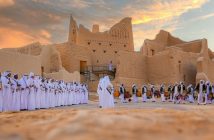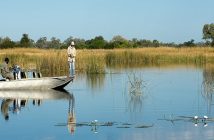Seville is one of those rare cities – Florence is another – where you can expect a casual stroll to yield one delight after another. Much of Seville’s old city is pedestrianized and perfect for just wandering around on foot, finding architectural treasures round every corner. Street lamps are hung on the walls of the houses, large, ornate and giving out a soft, flattering light. The houses themselves look decidedly closed from the outside, shuttered and barred, the often massive, studded doors firmly shut. If one should be open, though, you glimpse a secret world, a marble courtyard open to the sky, filled with greenery and usually a splashing fountain. All of this owes much to Seville’s Moorish heritage. Even the cathedral was once a mosque, its tower a minaret later topped with bells and crosses. Its keyhole windows, though, are still unmistakably arabesque because for seven centuries, Islam ruled in southern Spain. Longer, if you think about it, than the subsequent re-Christianised Andalusia.
If their houses are closed, Sevillanos are the opposite. Even in early March, everyone is out on their evening walk, the paseo, stopping to chat with friends, take a fino (super-dry sherry) and a small tapa in one bar, before continuing to a little late night shopping and eventually, much later, dinner. In Seville, life is lived outdoors and at this time of year it is magical, the air infused with the heady smell of orange blossom from Seville’s 30,000 orange trees.
In the gardens of Seville’s royal palace, the Alcazar, that scent blends with jasmine, a suitably sensual mix for this palace of delights. Spanish royalty has historically preferred to hold its big events – such as weddings – here rather than the massive Gothic cathedral, a stone’s throw away. The simple reason is probably that in spite of the grandeur, the altarpiece that uses a ton of gold, and the soaring space, the cathedral’s a bit of a gloomy place.

The Alcazar, on the other hand is a joy. For all its glorious beauty, it’s built on a human scale and filled with fountains, shady courtyards and gardens, while the tiles, the delicate plasterwork, the elegant double columns and horseshoe arches represent some of the finest Islamic art you will ever see. And here lies the conundrum because when it was built in 1364, it was commissioned by Pedro I – a Christian king. His Muslim workers created a jewel box of courtyards and halls, a recurring rhythm of light and shade while Pedro and his descendants added the occasional European touch – scallop shells as the emblem of St James (Santiago, Spain’s patron saint), castles and lions for Castile y Leon, the great Spanish royal house.
For centuries, in fact, Seville was effectively the winter capital of Spain, evidenced in its many smaller palaces in the old town for the nobility. Many are now hotels built, albeit on a smaller scale than the Alcazar, around similar marble courtyards with fountains and greenery, a necessary cooling system in the savage Andalusian summer – a house with a courtyard is 12 degrees cooler than one without. In March this was not something I needed to worry about but, staying at the beautiful Hotel Palacio Villapanes, I counted its numerous patios of varying sizes, some spacious and public, others tiny with a single seat, all utterly tranquil and calming spaces.
Back on the city streets, though, and it’s a different world, noisy, filled with shouts and laughter and music. Seville’s a musical place – it has featured in some 138 operas (you’ll see plenty of references to Carmen, Figaro and Don Giovanni) – but the local music is, of course, flamenco. At the Flamenco Dance Museum, the stage floor is pitted with the marks of the dancers’ shoes – percussive instruments in themselves – and the audience crowds round the tiny stage just big enough for one singer, one guitarist and two dancers. None was in the first flush of youth but they were powerful, passionate performers and you can see the chemistry – flamenco is as improvised as jazz.

Granada’s Alhambra was built very soon after the Alcazar in Seville but it feels much more of a fortress than a palace. Strategically situated high above the town, it was the last Moorish kingdom to fall to the reconquistadores in 1492. The caliphs who built it must have known their days were numbered but inside the fortified walls they still contrived to build an Islamic paradise on earth – green gardens, cooling fountains, delicate craftsmanship of glass, tiles, wood and plaster. The plasterwork in particular is remarkable, resembling finely wrought stalactites falling from the ceilings. This effect was intentional and meant to imitate the stalactites of the prophet’s cave, underlining the piety of the Alhambra’s rulers. In spite of Napoleon’s attempts to blow it up and its decades as a squat for, as my guide described them, “gypsies and vagabonds”, it is still one of the planet’s most iconic buildings, a masterpiece of Islamic art in the heart of Europe. At night it is lit from below and the limestone walls glow, with the snowy peaks of the Sierra Nevada turning pink in the sunset behind them.
Cordoba, the last of my Moorish cities, is not visited so much as Seville or Granada but it should be. It has some of the most beautiful courtyards in Andalusia – called patios here which conjures a quite different image – that have their own festival and competition in May. The streets and squares are lovely, bars and restaurants spill out on into the open air, there are fascinating museums (flamenco, bullfighting) and magnificent Roman remains.

At its heart is the mezquita or mosque that has an integrity that even the cathedral rudely inserted in its centre couldn’t destroy. Its rhythm of slender columns with their double horseshoe arches reaches in every direction, repeating symmetry as far as the eye can see. Marble and stone, reds and creams are the principal materials but there were, too, ivory and jasper, porphyry, gold, silver and brass. It is architecture as music and even the Holy Roman Emperor, Charles V, regretted the additions. When he visited the completed cathedral installed in the centre of the mosque, he lamented, “They have taken something unique in all the world and destroyed it to build something you can find in any city.”
MORE THAN TAPAS
While we Brits know all about tapas, there’s a lot more to Spanish food than that. My first foray into Andalusian cuisine was a remarkable lunch at Seville’s Michelin starred Restaurant Abantal. The chef/proprietor, Julio Fernandez Quintero, uses very local ingredients and reinvents Andalusian recipes presenting them beautifully on plates that appear to be made of lava. Translated into English, “baby shrimps with micro seaweed emulsion and artichoke”, “pork shoulder with truffled pumpkin cream, mushroom, lime and grapefruit”, the menu gives no idea of the delights to come – foams and petals, intense surprising sauces, pork as red as beef, a dessert of strawberries mixed with tomatoes. Inspired.
The following evening (a gap of 18 hours is a good thing in these circumstances) I had another typically Andalusian tasting menu – lobster salad with mango ice cream, scallops with duck liver sauce, sea bass and suckling pig – at Las Estrellas de San Nicolas which has one of the most extraordinary views in the world, overlooking the glowing Alhambra Palace. They have a great outdoor bar, too, with the same view.

My last feast was at Doble de Cepa in Cordoba – at this point I had to beg for smaller portions. The tasting menu was again based on traditional dishes (a delicious cold tomato soup, tuna, fried fish, langoustines and oxtail). We sat in the inner courtyard and, as it was Sunday lunchtime, it was crowded out with locals and a tiny stage had just enough room for a guitarist and a singer who wowed us all with – you guessed it – flamenco.
For more information about Andalusia and its cities, included details of what to do and planning your trip, visit www.andalucia.org.
In Seville, Anna stayed at the Hotel Palacio Villapanes, Seville and dined at Restaurant Abantal. In Granada, the Hotel AH Granada Palace and the Restaurant Estrellas de San Nicolas (the one with the view). And in Cordoba, Anna stayed at the Hotel Alfaros and ate at Doble de Cepa.




